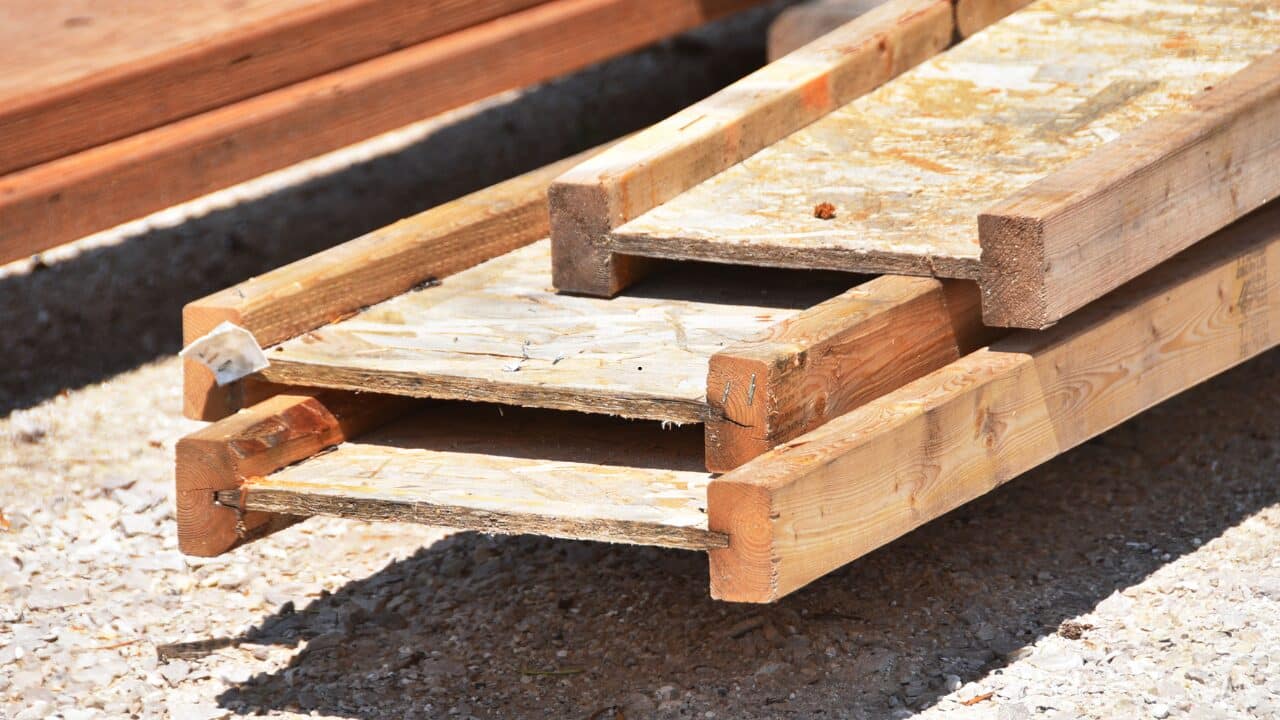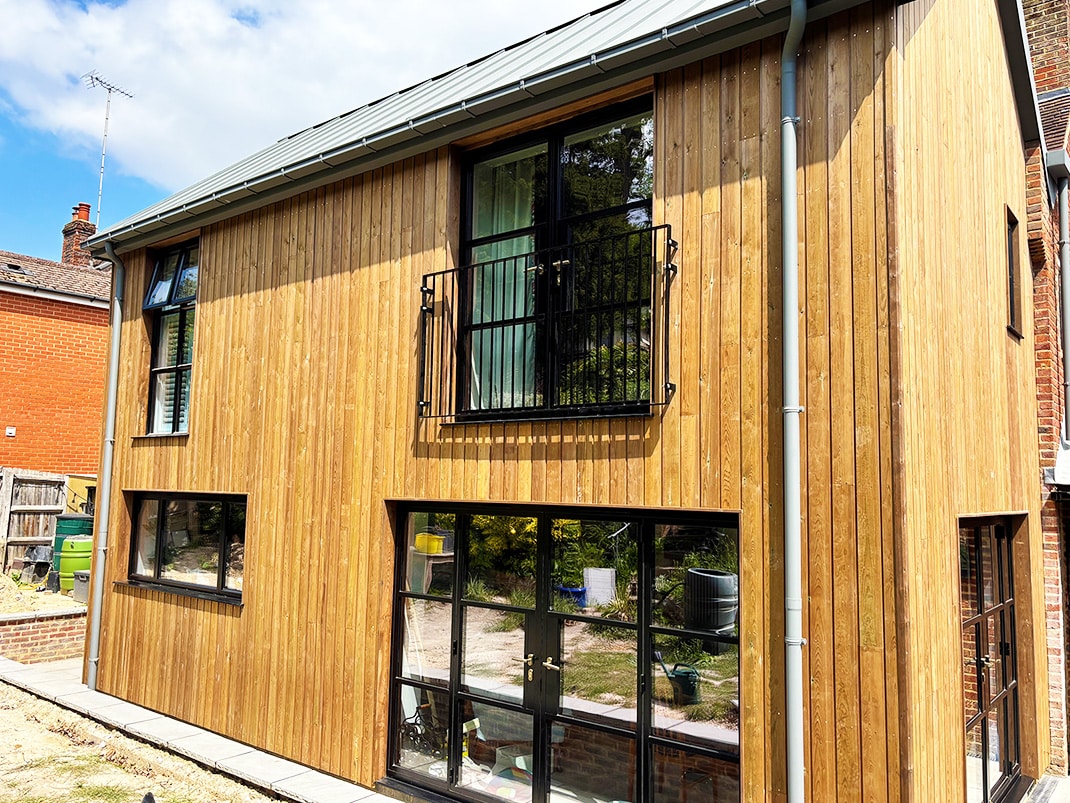In the world of modern construction, the structural elements that support floors, ceilings, and roofs are essential to the overall safety and stability of a building. I-joists, a type of engineered wood product, have become increasingly popular for their strength and efficiency.
These products are specifically designed to offer exceptional load-bearing capacity while minimizing weight, making them ideal for various applications in both residential and commercial construction.
But just how strong is an I-joist compared to traditional wood beams, and what factors contribute to its impressive strength?
In this article, we will explore the structural strength of I-joists, the factors that influence their performance, and the benefits they offer in construction projects.
An I-joist is made from two primary components: the flanges and the web.
The flanges are typically made of materials like laminated veneer lumber (LVL), which provides high strength, while the web, often constructed from oriented strand board (OSB) or plywood, connects the flanges and adds stability.
This design allows I-joists to support heavier loads over longer spans without the need for additional support structures.
Understanding how these materials and design features contribute to the strength of an I-joist will help you appreciate why they are often considered a superior choice in modern construction.
Table of Contents
Key Factors that Contribute to the Strength of an I-Joist
The strength of an I-joist is influenced by several factors, including the materials used, the dimensions of the joist, and its design. The combination of these factors allows I-joists to offer superior load-bearing capacity compared to traditional solid wood beams.
- Material Selection: One of the most important factors contributing to the strength of an I-joist is the high-performance materials used in its construction. The flanges of an I-joist are typically made from laminated veneer lumber (LVL), a material known for its strength, consistency, and ability to withstand high loads. LVL is manufactured from layers of wood veneer that are bonded together, providing excellent structural integrity. The web, which often consists of OSB or plywood, adds additional stiffness and resistance to bending, further enhancing the overall strength of the I-joist.
- Design and Shape: The unique I-shaped design of the joist is another factor that contributes to its strength. The I-joist’s top and bottom flanges act as beams that support the majority of the load, while the web connects these flanges and adds stability. This configuration allows I-joists to efficiently carry loads without the excessive weight of solid wood beams. The I-shape also minimizes the amount of material needed while maximizing the load-bearing capacity, making the product both strong and lightweight.
- Dimensions and Span: The strength of an I-joist is also determined by its size and span. I-joists are available in various depths and lengths, allowing engineers and builders to select the appropriate size for their specific project needs. The deeper the I-joist, the greater its load-bearing capacity. Span tables, which provide specifications for the maximum allowable span based on the size and load requirements, help ensure that I-joists are used within their optimal performance range.
I-Joists vs. Traditional Wood Beams: Load-Bearing Capacity
When comparing the strength of I-joists to that of traditional solid wood beams, there are several key differences to consider. While traditional wood beams are often effective in many applications, they generally have limitations when it comes to spanning long distances without support.
- Longer Spans: I-joists excel at spanning longer distances without additional support. The engineered design of the I-joist, with its strong flanges and efficient web, allows it to carry heavy loads over longer spans than traditional wood beams. In comparison, traditional wood beams may need to be thicker or more numerous to handle the same load over a similar distance, increasing both the weight and the complexity of the structure.
- Minimized Deflection: Another advantage of I-joists over traditional wood beams is their resistance to deflection. Deflection refers to the bending or sagging that can occur in a beam when it is subjected to weight. Because I-joists are engineered to distribute the load more efficiently, they experience less deflection than traditional solid wood beams, helping to maintain a level surface in floors, ceilings, and roofs. This resistance to deflection is crucial in both residential and commercial buildings, where uneven floors or sagging ceilings can lead to structural problems.
- Material Efficiency: I-joists are designed to be more material-efficient than traditional wood beams. The I-shaped design uses less wood while maintaining or even exceeding the load-bearing capacity of solid wood beams. This reduction in material usage not only makes I-joists a more cost-effective option but also reduces the overall weight of the structure, making them easier to handle and install.
I-Joist Performance in Residential and Commercial Construction
I-joists are used in both residential and commercial construction due to their impressive strength and versatility. In residential construction, I-joists are often used for floor systems, providing a stable and durable foundation for the upper levels of the home.
The ability of I-joists to span long distances without the need for additional supports allows for more open and flexible floor plans, a key feature in modern home design.
In commercial applications, I-joists are commonly used for large-scale projects such as office buildings, warehouses, and retail spaces.
The strength of I-joists enables them to support the heavy loads that are often found in commercial structures, including the weight of HVAC systems, lighting, and other utilities.
The ability to cover large spans with fewer supports reduces the overall material and labor costs, making I-joists a cost-effective solution for commercial construction.
The exceptional strength and stability of I-joists also make them ideal for roof framing. I-joists can be used to create large, open spaces in the roof structure, reducing the need for support beams and allowing for more flexible designs.
The reduced weight of I-joists helps to lower the overall load on the building’s walls and foundations, contributing to the overall stability of the structure.
Durability and Long-Term Strength of I-Joists
In addition to their strength, I-joists are known for their durability and long-term performance. Engineered wood products like I-joists are designed to resist common issues that affect traditional wood beams, such as warping, twisting, and shrinking.
The use of high-quality materials such as LVL and OSB ensures that I-joists maintain their strength and stability over time, even in challenging environmental conditions.
I-joists are also less susceptible to issues like moisture damage or insect infestation, which can weaken traditional wood beams. The consistent quality of engineered wood materials provides peace of mind to builders and homeowners, knowing that their structure will remain strong and stable throughout its lifespan.
Additionally, many I-joists come with manufacturer warranties, which offer additional assurance regarding the product’s long-term performance. These warranties help to guarantee that the I-joists will continue to perform at their designed strength levels for many years, making them a reliable choice for builders and homeowners alike.
What Is The Strength Of An I-Joist
I-joists are incredibly strong and durable, offering superior load-bearing capacity compared to traditional solid wood beams. The combination of high-performance materials, efficient design, and customizable sizes allows I-joists to handle heavy loads over long spans without compromising stability.
Whether used in residential or commercial construction, I-joists provide the strength needed to support floors, ceilings, and roofs, all while minimizing weight and material usage.
The engineered design of I-joists not only enhances their strength but also improves their performance by reducing deflection and ensuring long-term durability.
Builders and engineers can rely on I-joists to provide a safe and stable foundation for their structures, making them an essential component of modern construction. Whether framing a home, office building, or warehouse, I-joists offer the strength and performance required to meet the demands of today’s construction industry.





